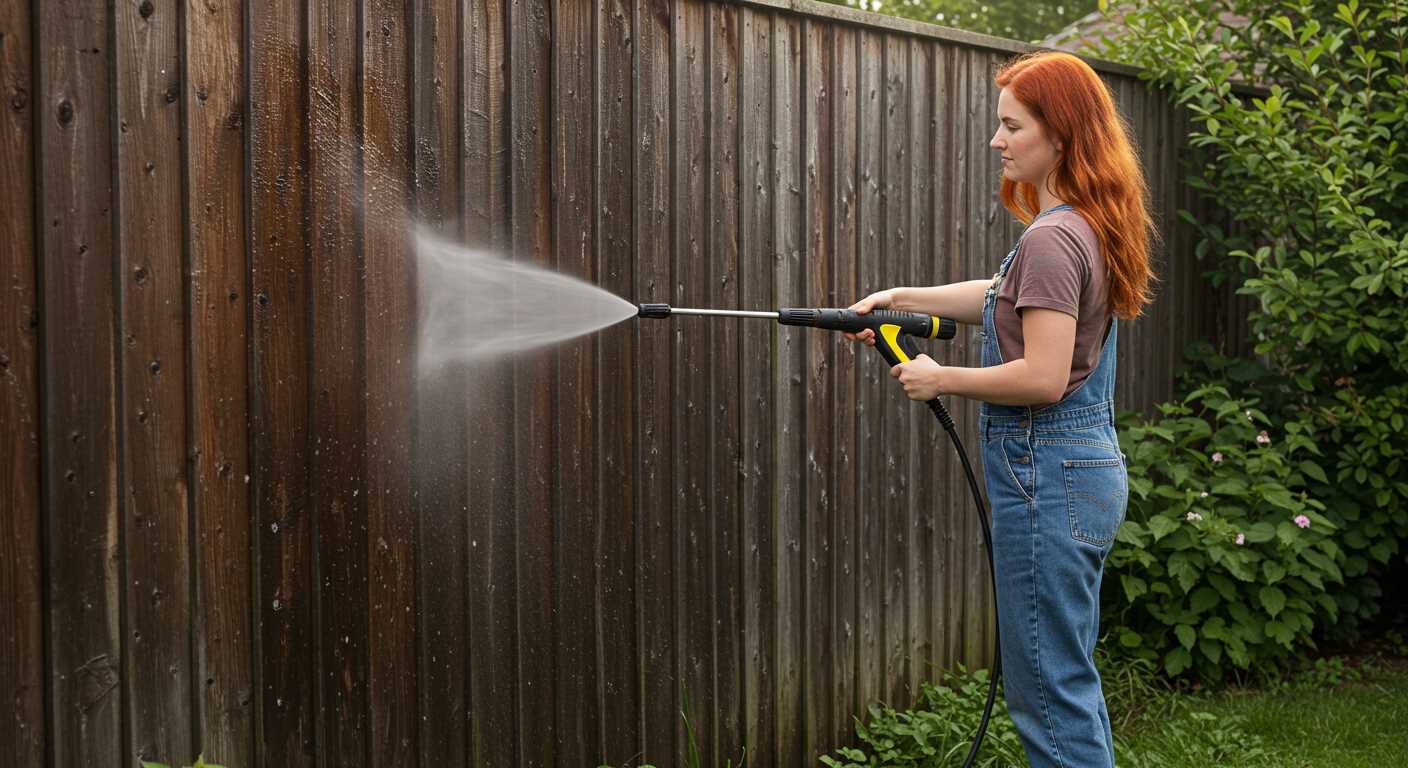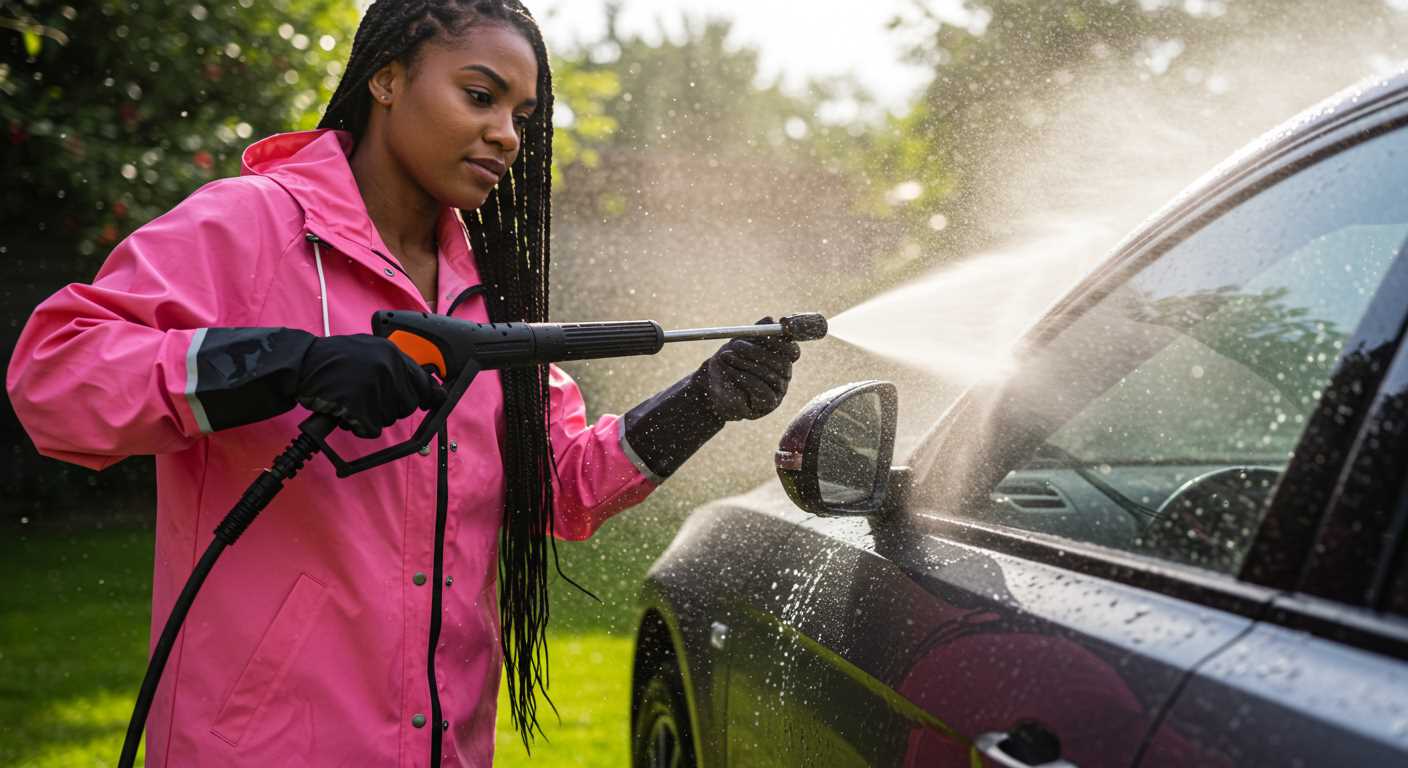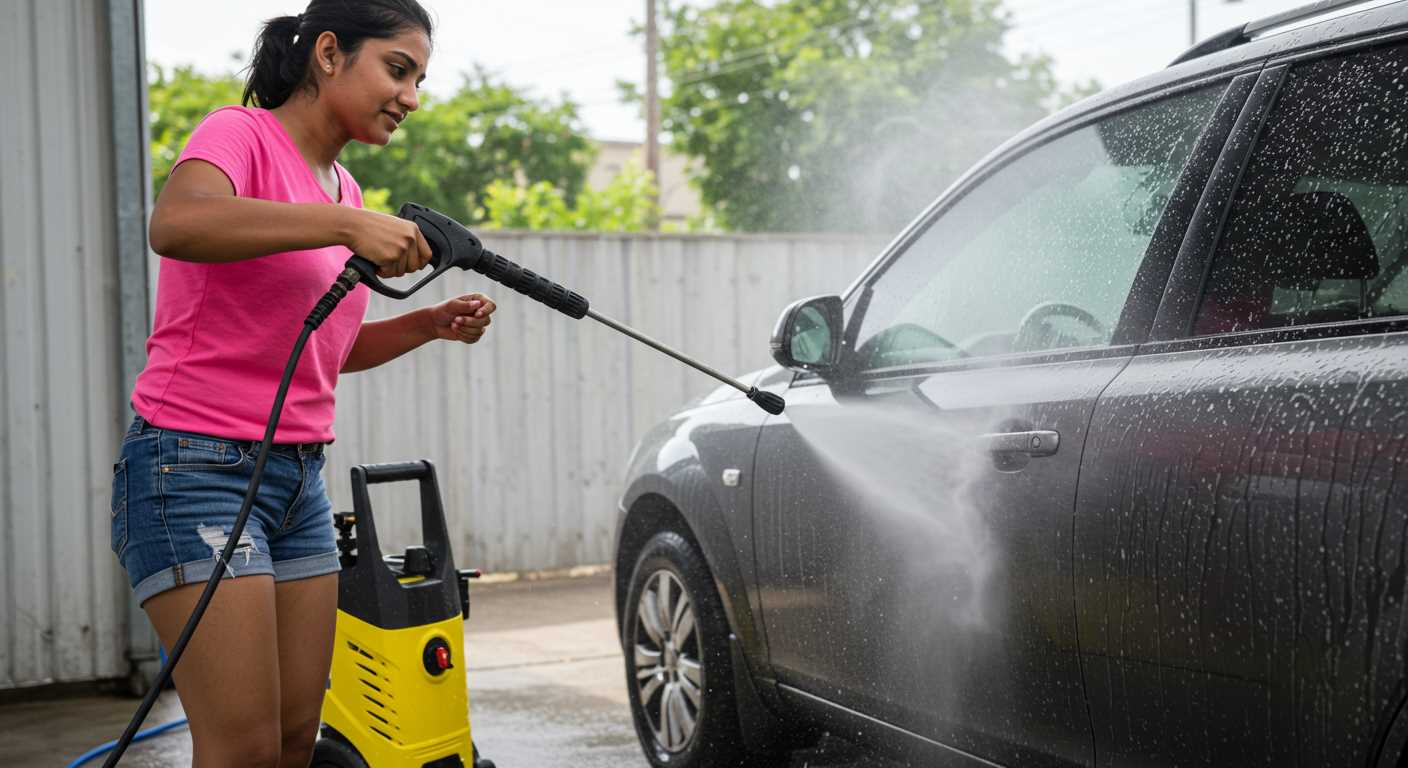



For anyone considering the interchange of pneumatic tubing with high-pressure cleaning systems, a definitive answer emerges: it is not advisable. The structural integrity and performance standards of each product category vary significantly, making direct substitution unwise.
Pressure cleaning devices demand a specific set of requirements tailored to handling high-pressure water. Standard pneumatic tubing lacks the necessary reinforcement and can lead to ruptures under the stress of water pressures. Not only does this pose safety risks, but it also jeopardises the efficiency of the cleaning process.
Alternative options exist, such as acquiring high-pressure tubing specifically designed for washing applications. These products are engineered to bear the strain associated with water expelled at high volumes and pressures, ensuring both safety and optimal function during use.
Comparing Specifications of Compressor and Washer Hoses
To ensure optimal performance, it’s critical to note key specifications such as pressure rating, diameter, material, and length for both types of tubing. These factors determine compatibility and usability in distinct applications.
Pressure Rating

Tubing designed for compressors typically features a maximum pressure range from 90 to 300 PSI, accommodating air pressure needs effectively. In contrast, those manufactured for cleaning devices often operate between 1500 to 3000 PSI, capable of handling high-pressure water output. Selecting a line with the right pressure thresholds is vital to avoid ruptures and equipment damage.
Material and Flexibility

Materials vary widely; hoses for compressors are often made from rubber or PVC, offering decent flexibility but limited resistance to chemicals. On the other hand, hoses intended for cleaners are usually constructed from reinforced materials like polyurethane or rubber blends, providing superior durability and resistance to high temperatures and chemicals. This difference significantly affects usability and longevity, so prioritising the correct material is essential.
Assessing length is also necessary. Most hoses range from 25 to 100 feet, but specific requirements depend on workspace layout and intended use. Shorter lengths increase pressure efficiency for both applications, while longer options offer extended reach.
In summary, thoroughly examining specifications aids in selecting the right tubing for your needs, ensuring safety and performance. Opting for recommended types ensures reliability and efficiency in your tasks.
Understanding the Risks of Using an Incompatible Hose
Utilising a mismatched tubing for high-pressure cleaning can lead to significant hazards. I recommend strictly adhering to manufacturer specifications to ensure safety and performance.
Potential Damage and Malfunctions
When incompatible tubing is connected to a cleaning device, several issues can arise:
- Pressure Loss: Non-rated tubing often cannot withstand the required pressure, leading to a drop in performance.
- Leaks: Poorly fitted connections may result in leaks, compromising the cleaning process and creating a slippery environment.
- Internal Damage: If the tubing collapses or bursts, debris may enter the system, leading to potential internal damage.
- Shortened Lifespan: Constant stress on the machine can lead to premature wear and potential failure.
Safety Hazards
Using tubing not designed for high-pressure applications can pose serious safety threats:
- Bursting: The pressure may exceed the tubing’s tolerance, causing it to rupture unexpectedly.
- Injury Risk: High-pressure water jets can inflict serious injuries if not contained properly.
- Equipment Damage: Incompatibility may also damage accessories, leading to costly repairs.
Always prioritise safety by selecting the correct tubing that meets specified standards for high-pressure cleaning tasks. Regular inspections of equipment and hoses are necessary to ensure safety and optimal performance.
Assessing Pressure and Flow Rate Requirements
For optimal functionality, prioritise understanding the specifications regarding pressure and flow rates. Each cleaning system operates best within a specific range of pressures, usually measured in PSI (pounds per square inch), and flow rates, indicated in GPM (gallons per minute). Check the user manual for the system to find the recommended PSI and GPM values.
A minimum effective pressure for most tasks typically sits around 1200 to 2000 PSI, while flow rates generally range from 1.5 to 2.5 GPM. It’s essential to select a connecting line that can comfortably handle these metrics without compromising performance or safety.
For effective cleaning, ensure the connecting pipe can withstand higher pressure levels if the cleaning unit requires it. Incompatible connections may not efficiently transmit the necessary water flow, leading to unsatisfactory results. Test various attachments under controlled conditions before committing to a specific combination to ascertain the satisfactory performance of each component.
Furthermore, assess how variations in flow rate influence cleaning efficiency. Higher flow rates lead to faster cleaning but may not always achieve the desired level of pressure for stubborn stains. Selecting equipment that appropriately balances both metrics will yield the best cleaning outcomes.
Lastly, consider environmental factors such as temperature and the type of cleaning solutions employed, as these can also affect performance. Sticking to exactly matched specifications minimises risks and ensures reliable, efficient operation. Always err on the side of caution and comply with all operational guidelines to maintain longevity and integrity of both systems involved.
Examining Hose Material Differences and Durability
Choosing the right material for the tubing significantly impacts longevity and performance. Plastic and rubber are prevalent in various configurations. Rubber typically offers better resistance to wear and high-pressure environments, making it preferable for equipment requiring high durability. Thermoplastic options, while lightweight and flexible, may not withstand the same stress levels as rubber counterparts.
Material Performance Under Pressure
Rubber hoses excel under high-pressure scenarios, withstanding temperatures and pressures that can compromise thermoplastic alternatives. If a project involves heavy-duty cleaning or prolonged use, rubber is the recommended choice. Thermoplastic can serve well in lighter applications but tends to degrade faster in harsh conditions, leading to potential failures.
Resistance to Chemicals and Abrasion
Assessing resistance properties is crucial when selecting tubing. Rubber exhibits superior chemical resistance, which is vital for compatibility with various cleaning agents, ensuring no degradation occurs during usage. Thermoplastic can be prone to chemical attack, which may compromise the integrity and lead to early replacement. Additionally, rubber’s rugged surface resists abrasions, making it suitable for rough handling and outdoor use.
Opting for robust materials ensures reliability in demanding situations. A judicious choice aligns not only with performance expectations but also with budget considerations, as high-quality materials tend to yield fewer replacements and lower maintenance costs in the long run.
Identifying Necessary Adaptors for Compatibility

To ensure fitting between the equipment and the chosen connecting lines, it is imperative to identify suitable adaptors. Mismatched diameters and thread types can lead to leaks or inefficient operation.
First, assess the diameter of the connectors on both implements. Standard sizes typically range from 1/4 inch to 3/8 inch for connectors. Confirming these measurements allows for accurate selection of adaptors.
Next, examine the thread specifications. Common types include NPT (National Pipe Thread) and BSP (British Standard Pipe). A mix-up here can create a problematic seal, so ensuring compatibility between the fittings is paramount.
Adapters can be sourced from hardware stores or online retailers. Always choose those made from robust materials to handle significant pressure and prevent future failures. Verify the maximum pressure ratings of both the adaptors and the hoses to maintain safe operation.
To facilitate the process further, consider acquiring a universal adaptor kit, which can offer flexibility across different devices and reduces the need for multiple specific fittings. This can be particularly helpful if equipment changes over time.
Finally, consult manufacturers’ guides for detailed information on compatibilities and recommendations related to particular models. Investing time in this will save potential hassles and ensure optimal performance during use.
Reviewing User Experiences and Case Studies
From my extensive time in the cleaning equipment sector, practical feedback from users regarding the compatibility of hoses offers invaluable insights. Various case studies illustrate both successes and difficulties when attempting to substitute typical high-pressure lines with those designed for pneumatic tools. Here’s a deeper look into specific experiences that stand out.
- Case Study 1: Homeowner’s Dilemma – A customer attempted to connect a traditional air line with their electric washing device. Initial usage seemed satisfactory, but after a short period, the owner reported diminished pressure and increased leakage from fittings. This highlighted the need for a thorough assessment of each unit’s specifications before substituting products.
- Case Study 2: Contractor’s Experiment – A landscape contractor wanted to reduce costs by integrating a less expensive air line into his equipment. While this modification allowed for some initial savings, it resulted in several equipment failures over time. The contractor noted that the pressure ratings didn’t match the demands of the machinery, leading to equipment wear and reduced performance.
- Case Study 3: DIY Enthusiast – Another user effectively implemented a hybrid solution using adaptors to connect a commercial air line with a compact washing system. In this case, the situation worked well for low-pressure tasks and yielded satisfactory results. However, they cautioned others to stick with the specified parameters outlined by manufacturers to avoid costly mistakes.
Across these cases, a clear trend emerges: while some successful integrations occur, most issues stem from mismatched specifications. Ensuring appropriate pressure ratings and compatible materials remains essential. Each user’s experience serves as a reminder of the importance of proper research before making modifications. Diversifying equipment enhances performance only when compatibility is ensured.
Lastly, I’ve encountered countless instances where users felt misled by marketing materials of alternative hoses. Many claimed equivalence to high-pressure units, only to find their functionality lacking under rigorous use. Venturing into untested territory can yield unexpected consequences, reinforcing the necessity of sticking with tried and tested solutions.
Exploring Alternative Solutions for Your Washing Needs
Utilising non-standard equipment can occasionally yield satisfactory results, but in my extensive experience, it is often more prudent to seek alternatives that align closely with specific tool requirements. Here are some recommendations to consider as alternatives for optimal performance during clean-up tasks.
Types of Compatible Hoses
Choosing the right type of hose is paramount. Look for options crafted specifically for high-pressure scenarios, which can withstand the necessary force without degradation. Synthetic materials designed for hydraulic applications typically offer superior resilience, making them a solid choice for outdoor cleaning tasks.
Choosing the Right Connectors
A variety of connectors and fittings exist, ensuring compatibility between hose types and equipment. Verify the size and threading specifications of your tools to ensure a tight, leak-free connection. Using proper fittings will enhance durability and performance alike.
| Type of Hose | Pressure Rating (PSI) | Material |
|---|---|---|
| Polyurethane | 4000 | Flexible |
| Rubber | 5000 | Durable |
| PVC | 3000 | Affordable |
In examining compatibility, it is vital to consider both the pressure and flow rate of the cleaning device to avoid performance issues. Choose hoses rated for higher tolerances than your equipment demands to account for any variations during operation.
Feedback from users reveals mixed experiences with employing non-standard solutions. While some reported temporary success, many faced frustrations with leaks, reduced efficiency, and even damage to their tools. Choosing the right equipment not only eases the task but ultimately extends the lifespan of your investment.








